Comments / Questions (229)
![]() Sarah wrote:
Sarah wrote:
Hi I’m stuck on the neck elevation. When it says work 58 st (includes the 8 decreases) is that counting the Dec as 1 st or as 3 st. It seems impossible to knit 58 st with 8 Dec, even if counting the Dec as 1 st. I can only fit in 7 Dec into 58 st. please explain
23.04.2018 - 20:23DROPS Design answered:
Dear Sarah, you work the 58 sts but dec for raglan as before (you will then have less than 58 sts on needle after this row). Happy knitting!
24.04.2018 - 08:49
![]() Loison wrote:
Loison wrote:
Bonjour, j'ai monté les manches et le corps sur la même aiguille, j'ai placé mes marqueurs au niveau des manches. A combien de mailles du marqueur (avant marqueur et après marqueur) dois je faire mes diminutions? en vous remerciant pour votre réponse, bien cordialement
06.04.2018 - 15:21DROPS Design answered:
Bonjour Loison, vous tricotez A.2 à chaque transition des manches avec le dos/le devant, et le marqueur se trouve au milieu de A.2, vous avez donc à chaque transition: les 4 premières m de A.2, le marqueur, les 4 dernières m de A.2. Et vous allez diminuer pour le raglan avant ou après A.2 au début et à la fin du devant/du dos/des manches. Bon tricot!
06.04.2018 - 16:05
![]() Kirsti Næss wrote:
Kirsti Næss wrote:
Hei...skal det være like mange masker på for- og bakstykket?
05.04.2018 - 13:51DROPS Design answered:
Hei Kirsti, Ja, samme antall masker på for- og bakstykket. God fornøyelse!
06.04.2018 - 08:13
![]() Monica wrote:
Monica wrote:
Hej! har kommit till intg. för raglan för fram och bakstycket och armen, mask antalet stämmer inte med intag. Har gjort 14 intag. för fram och bakstycket och även 12 intag. för armen, har nu 104 masker kvar, så mask antalet kommer inte att stämma när alla intag. är gjorda! Är det något fel på mönstret eller intagningarna? Tacksam för svar snarast. MVH: Monica
04.04.2018 - 13:29DROPS Design answered:
Nu vet jag inte vilken storlek du stickar, men jag har kollat och alla maskantal stämmer i alla stl. Du minskar 4 över fram- och bakst på varje varv med minskningar och 2 m över varje ärm.
05.04.2018 - 16:39
![]() Nora wrote:
Nora wrote:
Hej! Jag har nu stickat om fram/bakstycket ca 4 gånger men får ändå inte rätt stickfastighet. Började med stickor 5 men då blev det 21 m på 10 cm i A1. Nu använder jag stickor 7 och är ändå inte nere på 17m/10cm som mönstret beskriver. Jag har alltid stickat normalhårt och kunnat följa mönster men det här får jag inte ihop! Jag använder rätt garn men får ändå nederkanten till ynka 39 cm efter anvisningarna för stl M. Är det nåt tokigt med mönstret?
12.03.2018 - 22:17DROPS Design answered:
Hej Nora. DROPS Nepal stämmer med 17 m på 10 cm och sticka 5-6. M = 162 m / 17 m = 95 cm så det stämmer också enligt mönstret.... Kan du visa ditt arbete till din DROPS butik, så ser hon säkert vad som går fel... Lycka till!
20.03.2018 - 12:18
![]() Eveline Elzing wrote:
Eveline Elzing wrote:
Ik brei de m variant, maar ik ben volgens het patroon nog lang niet klaar met m'n minderingen maar ik heb nog maar 88 steken op de naald staan. Klopt het dat om de 2 naalden 4*2=8 steken worden geminderd en elke 4e naald nog een 4*2=8 steken extra geminderd? Zo ja dan ben je bij de 28e naald al klaar en dan heb ik 14x in het lijf geminderd en 7+2 x in de mouwen (in plaats van de 21 en 7+9 keer) waarom klopt dit niet?
04.02.2018 - 09:56
![]() Inger Sørbøe wrote:
Inger Sørbøe wrote:
Hei, er litt forvirret av oppskriften på raglandfellingen. Det står at det skal strikkes 3 m rett sammen .Er det riktig?
21.01.2018 - 17:58DROPS Design answered:
Hei Inger. Ja, det stemmer, men husk det er 2 forklaringer på raglanfelligene. RAGLAN og RAGLANFELLING (FORHØYNING.) God Fornøyelse
22.01.2018 - 09:26Hernan Segundo wrote:
Qué significa la abreviatura REM
14.01.2018 - 13:59DROPS Design answered:
Hola Hernan. Rem = rematar = cerrar. El termino rematar lo utilizamos para finalizar el trabajo, es decir, para no solo cerrar los puntos , sino que también asegurar todos los hilos.
14.01.2018 - 20:06
![]() Samantha wrote:
Samantha wrote:
Salve Non riesco a capire come fare gli aumenti. Devo farli sul ferro lavorato tutto a diritto o su quello dove lavoro un diritto + 2 rovesci? E non devo rispettare l'alternanza dei ferri e lavorare gli aumenti secondo il motivo? Perché devo lavorarli a legaccio? Grazie
06.01.2018 - 15:37DROPS Design answered:
Buongiorno Samantha. Potrebbe essere meglio aumentare su un ferro con 1 dir e 2 rov. Sul davanti/dietro si aumenta solo 2 volte e si lavora a legaccio in quanto altrimenti tutto il motivo non corrisponderebbe più correttamente. Buon lavoro!
06.01.2018 - 20:25
![]() Jeursen wrote:
Jeursen wrote:
Kan het zijn dat de raglanmindering 2 steken moet zijn ipv 3 steken........ik ben halverwege de minderingen.....en ik ben al aan mijn 96 steken .....maat XL.....om de naald, is toch elke 2de naald
22.12.2017 - 12:04
Twin River#twinriversweater |
|||||||
 |
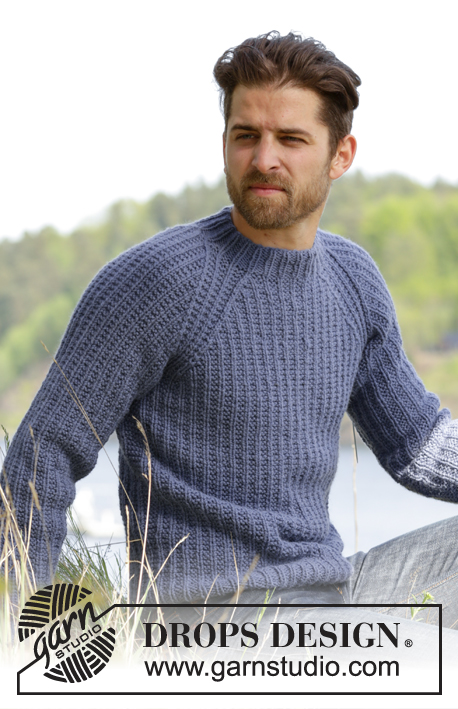 |
||||||
Knitted DROPS men’s jumper with textured pattern and raglan in Nepal. Size: S - XXXL.
DROPS 174-14 |
|||||||
|
PATTERN: See diagrams A.1 and A.2. RAGLAN: Dec as follows before A.2: Work until 2 sts remain before A.2, K the next 2 tog. Dec as follows after A.2: Slip 1 st as if to K, K 1, psso INCREASE TIP (BODY): Inc 4 sts on round as follows: Work until 1 st remains before marker in the side, 1 YO, work 2 sts in garter st, 1 YO (= 2 sts inc). Repeat inc in the other side of piece. On next round work YO twisted to avoid holes. Work the new sts in garter st. INCREASE TIP (SLEEVE): Inc as follows mid under sleeve: Work until 1 st remains before marker, 1 YO, work 2 sts in garter st, 1 YO. On next round work YO twisted to avoid holes. Work the inc sts gradually in the pattern. NOTE: Work sts on each side of marker in garter st. RAGLAN DEC (ELEVATION): All dec are done from RS! Dec as follows after A.2: K 3 twisted tog. Dec as follows before A.2: Work until 3 sts remain before A.2, K 3 tog. ---------------------------------------------------------- JUMPER: Worked in the round. BODY: Cast on 150-162-168-192-210-234 sts with Nepal on circular needle size 5 mm. * P 1, (K 1, P 2), repeat from (-) 23-25-26-30-33-37 more times, K 1, P 1, insert a marker here (= side) *, repeat from *-* 1 more time. NOTE: Move the markers upwards when working. Continue rib in the round like this until piece measures 4 cm. Now work pattern A.1 as follows: Work the last 2 sts in A.1, then repeat A.1 the entire round until 1 st remains on round, work the first st in A.1. REMEMBER THE KNITTING TENSION When piece measures 13-13-14-14-15-15 cm, inc 1 st on each side of each marker – see INCREASE TIP (BODY). Repeat inc when piece measures 27-28-29-29-30-30 cm = 158-170-176-200-218-242 sts. When piece measures 41-41-42-42-42-42 cm (adjust so that next round worked is 2nd round in A.1), cast off sts for armholes as follows: Cast off the first 5 sts on round, work the next 69-75-78-90-99-111 sts, cast off the next 10 sts for armhole, work the next 69-75-78-90-99-111 sts, cast off the remaining 5 sts. Cut the yarn. Put piece aside and knit the sleeves. SLEEVE: Work sleeves in the round on double pointed needles. Cast on 42-42-42-48-48-48 sts with Nepal on double pointed needles size 5 mm. Insert a marker at beg of round = mid under sleeve. Work rib as follows: P 1, K 1, * P 2, K 1 *, repeat from *-* until 1 st remains on round, P 1. Continue like this in the round until rib measures 4 cm. Now work pattern as follows: Work the last 2 sts in A.1, A.1 until 1 st remains on round, work the first st in A.1. When piece measures 9-8-7-6-10-9 cm, inc 1 st on each side of marker – see INCREASE TIP (SLEEVE). Inc like this approx. every 13th-9th-7th-7th-6th-5th round 8-11-14-14-14-17 times in total = 58-64-70-76-76-82 sts. When piece measures 51-50-49-48-47-46 cm - adjust so that next round worked is 2nd round in A.1, cast off the middle 10 sts under sleeve (= 5 sts on each side of marker) = 48-54-60-66-66-72 sts. Knit another sleeve the same way. YOKE: Slip sleeves on to same circular needle size 5 mm as body where armholes were cast off = 234-258-276-312-330-366 sts. This is done without working the sts. Insert a marker in every transition between sleeves and body = 4 markers. Beg round on back piece, 4 sts after marker between sleeve and back piece. Now continue pattern as before and work in addition A.2 (= 8 sts) in every transition between body and sleeves (markers are in the middle of A.2). On next round start dec for RAGLAN – see explanation above! NOTE: Dec differently on body and sleeves as follows: RAGLAN BODY: Dec every other round 21-24-24-24-26-26 times and then every round 0-0-0-6-7-13 times (= 21-24-24-30-33-39 times in total). RAGLAN SLEEVES: Dec every 4th round 6-6-4-3-5-5 times and then every other round 9-12-17-21-19-22 times (= 15-18-21-24-24-27 times in total). When all dec are done, 90-90-96-96-102-102 sts remain on round (= 144-168-180-216-228-264 sts in total dec). Now work pattern as before over the first 72-72-78-78-84-84 sts. Insert marker here (= between A.2 and right sleeve). Then work an elevation back and forth in neck in pattern as before AT THE SAME TIME dec for raglan on every row from RS over the sts worked – READ RAGLAN DEC (ELEVATION) as follows: NOTE: Tighten yarn at every turn to avoid holes. ROW 1 (= RS): Work 55-55-58-58-61-61 sts (including the 8 dec sts), ROW 2 (= WS): Turn and work 45-45-48-48-51-51 sts, ROW 3: Turn and work 43-43-46-46-49-49 sts (including the 8 dec sts), ROW 4: Turn and work 33-33-36-36-39-39 sts. There are now 74-74-80-80-86-86 sts on round. Turn and continue in the round with rib as follows: Work K over K and P over sts in garter st until rib measures 4 cm. Cast off sts with K over K and P over P. Jumper measures 64-66-68-70-72-74 cm from cast-on edge and up to shoulder. Fasten off. ASSEMBLY: Sew the openings under the sleeves. |
|||||||
Diagram explanations |
|||||||
|
|||||||
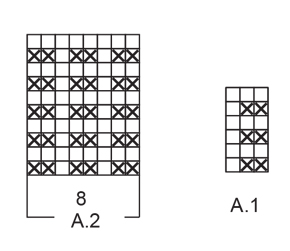 |
|||||||
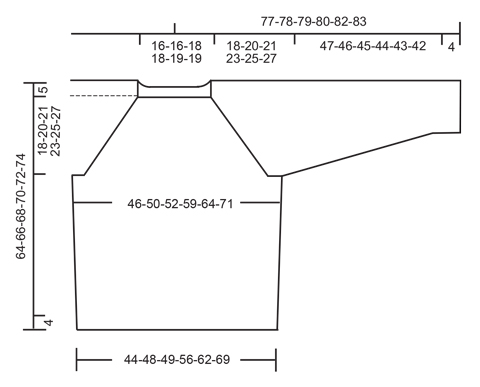 |
|||||||
Have you finished this pattern?Tag your pictures with #dropspattern #twinriversweater or submit them to the #dropsfan gallery. Do you need help with this pattern?You'll find 25 tutorial videos, a Comments/Questions area and more by visiting the pattern on garnstudio.com. © 1982-2025 DROPS Design A/S. We reserve all rights. This document, including all its sub-sections, has copyrights. Read more about what you can do with our patterns at the bottom of each pattern on our site. |
|||||||







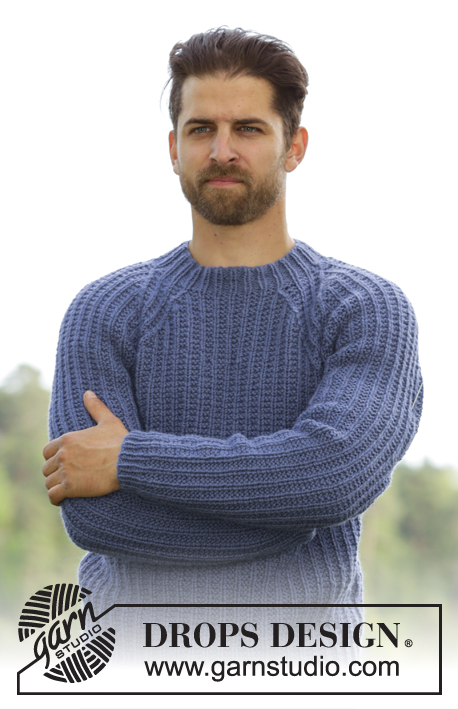
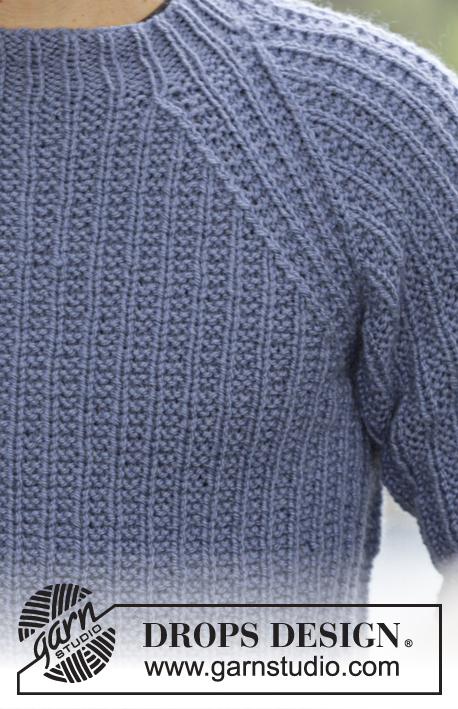

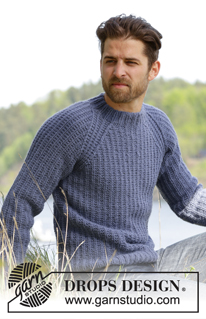
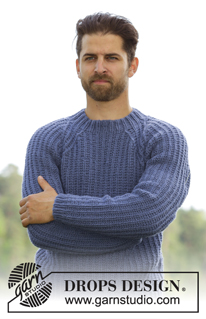
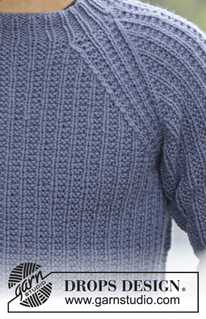







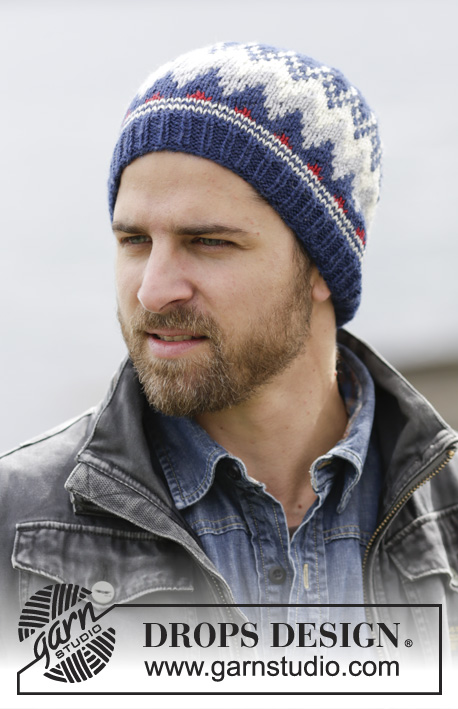

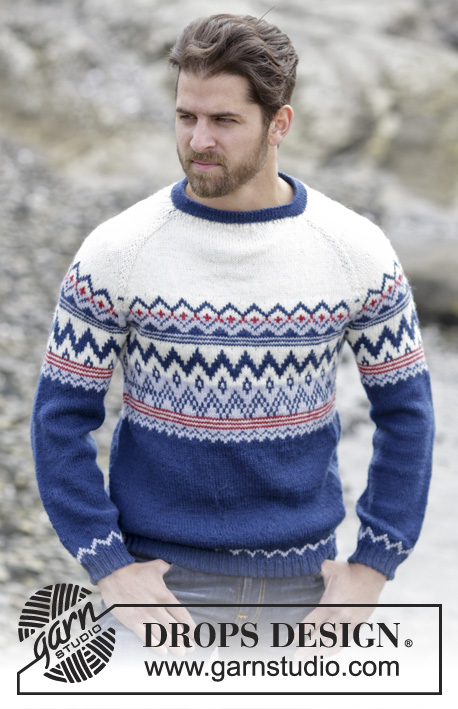







































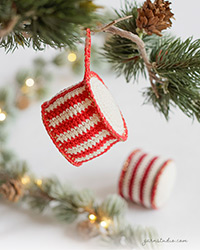





Post a comment to pattern DROPS 174-14
We would love to hear what you have to say about this pattern!
If you want to leave a question, please make sure you select the correct category in the form below, to speed up the answering process. Required fields are marked *.